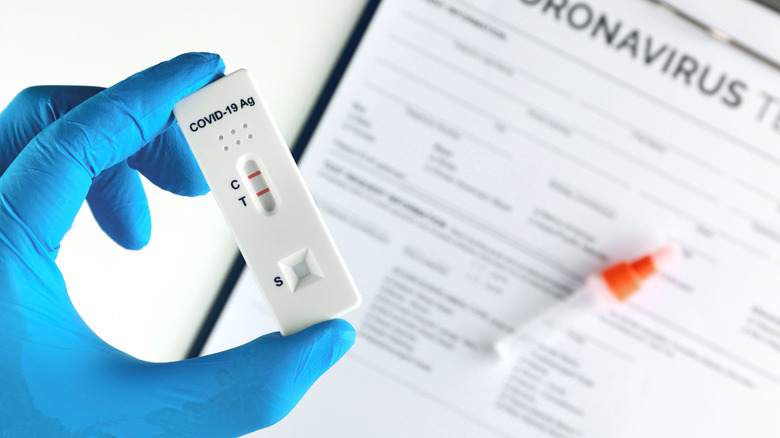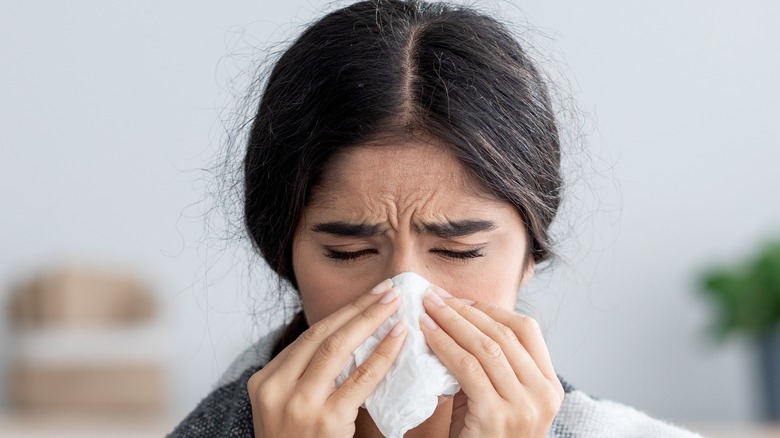What Happens If You Test Positive For COVID Before You Are Scheduled To Get Vaccinated?
The COVID-19 vaccine was first made available under emergency use authorization in December 2020. As of August 2022, 79% of the United States population had received at least one shot of the COVID-19 vaccine, according to Our World in Data. Boosters were then authorized by the U.S. Food & Drug Administration (FDA) in September 2021, although only 33% of the United States population has been boosted as of September 2022, according to the New York Times.
Recently, the Centers for Disease Control and Prevention (CDC) recommended people get the updated COVID-19 boosters that specifically target the Omicron variants. Whether you have not begun a round of vaccination or you're interested in the latest booster, the CDC recommends not waiting to get vaccinated. With the new round of boosters now available, you may have questions regarding how to receive them. Specifically, what should you do if you test positive for COVID before you are scheduled to get vaccinated?
Wait until you complete your isolation period
You have scheduled an appointment to get the COVID-19 vaccine or booster. However, a couple of days before your appointment, you start having symptoms of the illness and, eventually, test positive. Now what? Should you still go to get vaccinated? Not according to the CDC.
The CDC recommends those infected with COVID-19 wait to receive their vaccination until after their isolation period. How long your quarantine period lasts depends on if you have symptoms or are asymptomatic and whether you have previously received COVID-19 vaccines. If you want to be extra cautious, the CDC suggests considering putting off receiving your vaccination until three months after your symptoms started. f you're asymptomatic, when you received a positive test.
Of course, not everyone wants to wait that long. The minimum isolation period is five days, followed by five days of wearing a mask after testing positive for COVID-19, according to updated guidelines from the CDC.


